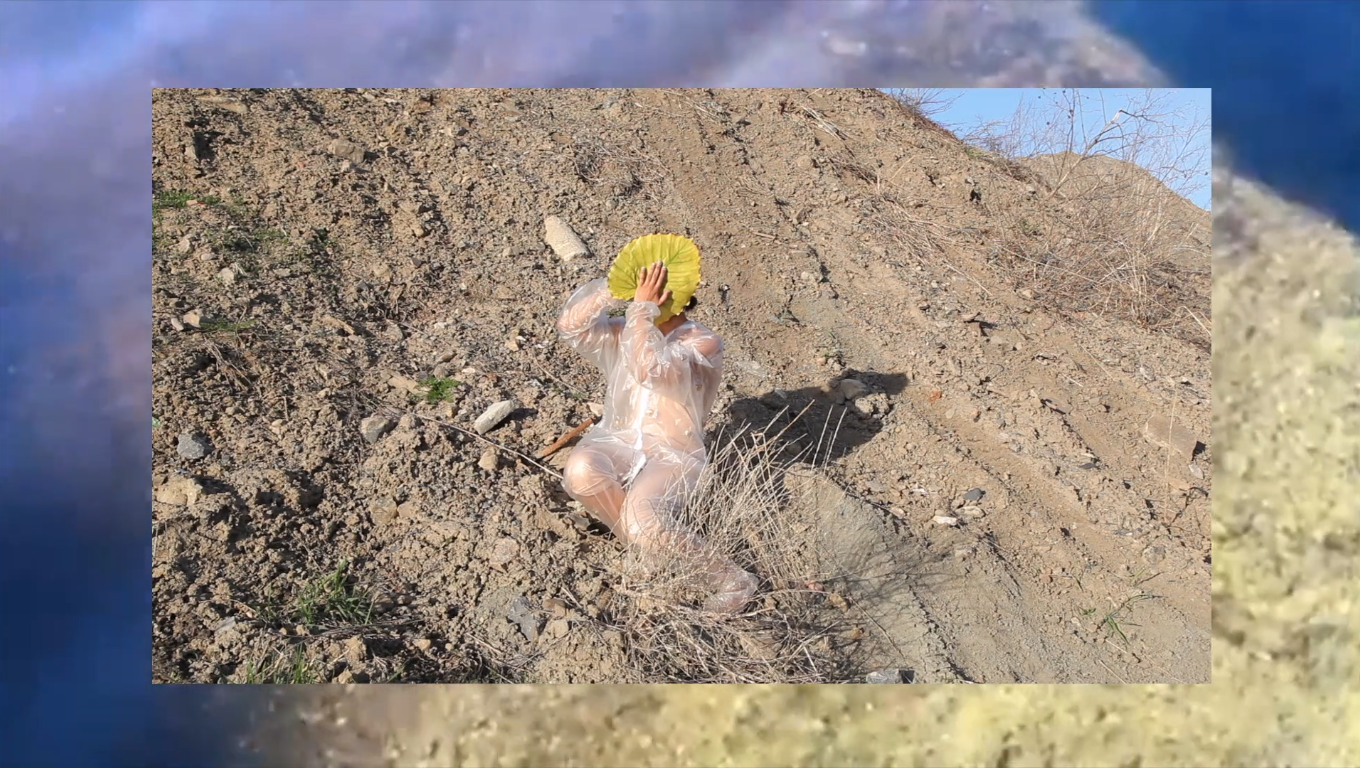
Through the imperceptible wifi connections linking myself and Eve Tagny, I could feel her love, trials, and vast experience with plant life. Coming together over FaceTime conversations darting between Winnipeg, Montreal, and Johannesburg, from fall to early winter, we spoke at length in varying shades of brown and green. She mentioned her current favourite plants (one is Gunnera, for those wondering), we shared thoughts about the relationship between nature and trauma, and her meditations on the garden as a space of pause remain imprinted on my mind. In Tagny’s practice, natural, living materials act as mediums to disseminate the poignant feelings of trauma that life experience brings to all of us. The conversation, touching topics harrowing to some, and quite personal at times, was altogether warm, inviting, and refreshing—and much too long to fit in this parking space. For moments I felt like I was transported outside of barren studio walls and placed in a virtual garden of sorts, resting in between plots of organic conversation.Through photography, photocollage, film, gardening, installation, and performance, Eve Tagny’s work explores death in ways that give respite to those enduring life. She examines grief not as a state to overcome, but rather through coping and attempting to further understand how one continues on in the present with the inevitable battering of trauma. She grapples with love, and all the aforementioned themes, with the balance and poise of someone who makes it a priority (or for whom life makes it a priority) to sit and meditate in places of pause. The composition of Tagny’s work brings to mind unique contemporaries like Kwesi Abbensetts, who, like Tagny, matches bodies and forms to nature in nuanced and striking manners, dancing between and mixing media in ways that leave the seeds of new ideas germinating in the viewer’s mind. That’s my experience at least—the subjectivity of art remains paramount. But the already notable international recognition towards Tagny’s emerging practice remains an incontestable point. Her work has traveled nationally and internationally over the better part of the last decade, and in 2018 the Contemporary African Photography Association shortlisted her series Lost Love for their self-titled grand prize. And she also received an Honorouble Mention from the Burtynsky grant for her book project from the same series . Tagny describes Lost Love as “not solely a eulogy for the dead, but rather a testament for the living.” In the space of the living, we engage with her practice, its history, current form, and where the artist sees it leading in the future.
it’s been freeing to actually go through a process that’s so intense, so deep, that you stop giving fucks and you just have to do things because they’re vital and pressing—you just need to externalize them. Sometimes that can be a very strong vehicle, especially when dealing with trauma and grief
What have you been feeling following your most recent show?
It’s been weird, honestly... doing the show was pretty much like giving everything that lives inside of me and putting it out into the space, and the install was really intense. I was at the gallery from 12 to 3 am every day. It was just going from my Airbnb to the gallery, leaving, cycling back... and then I came home and took it really easy. It wrapped up a lot of things I was working on for a long time. So it’s been quite a cycle and now it’s ending, and I’m changing and preparing for the next steps. The year has been full, so that’s good.
That’s great. I wanted to start with your background; where you grew up and your family is—You grew up in Montreal, right?
Yeah, I was born in Le Plateau-Mont-Royal, and I grew up in the neighbourhood my whole life and still live there. I live ten minutes from where I was born. My mom is Quebecois, and my dad is originally from Cameroon... he moved here when he was twenty on a student grant or something like that, back in the day, so he’s been here most of his life. That’s my heritage; I was born in Montreal, raised here, Francophone.
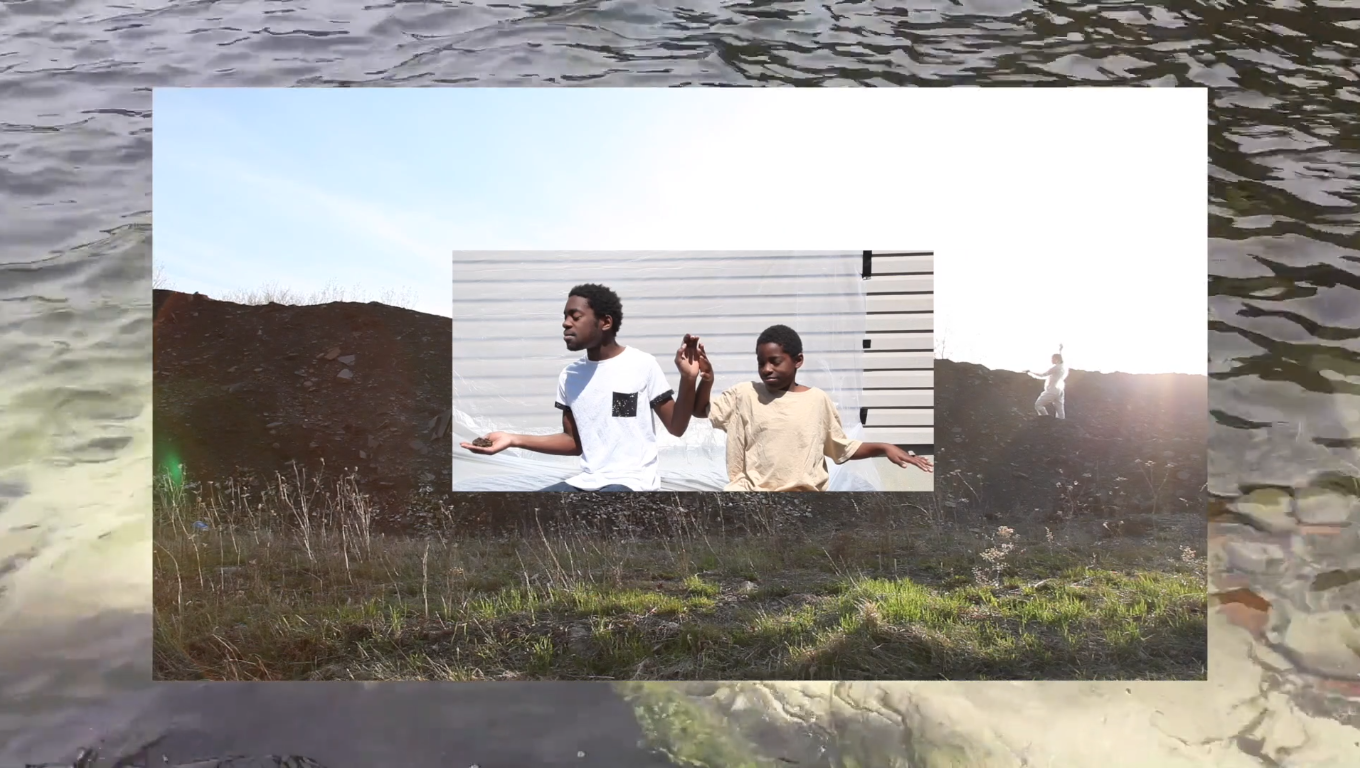
We Weight on the Land, 2019, Eve Tagny
There’s definitely something to be said about investigating certain intangible feelings without pinning down too much in the form of concept... I think definition can take away some of the magic. I’m wondering how much of your creative process when it comes to film work and photography is feeling versus thought, or if you think about it in that sense—as a binary?
That’s interesting, because it’s definitely something I’ve been trying to navigate in the last projects I’ve done and I guess I’m figuring it out as I go. My practice and the shape that it’s taking now is what you would call an emerging practice.
[The development of my practice has] been really amazing and it’s also been new in my life that I’ve had opportunities to express myself and find places where I feel safe and I’m not lost in translation constantly, so I’m able to go further within what I can create or achieve with people and through conversation.
About thought and instinct... when I was making the book Lost Love, which is about a very personal experience of grief and loss, my way of responding to this event, this trauma, was, I think, very Western in the sense that I was trying to rationalize everything. So, my process at first was research-based; I was reading and thinking a lot about grief, trauma, memory, the brain, what happens in the brain when you experience trauma… just really trying to understand what I was going through [in ways] that were very rationalized or science-based, and then reading more artistic takes on it. So I think first it comes from a desire and then I try to gather as much information and at some point when it’s the very last minute and I have no time left, then I just go through it [laughs].
Having all the material allows me to create spaces where I have lots of things to play around with and then I let chance come in. For instance, in one of my videos, there are these big windows and I’m performing certain sets of gestures in front of them with a lemon and other objects. The work changed completely once I got in the space; it was supposed to be all about rocks and then I was like, ugh, it’s winter, there are no rocks, it’s too complicated, I have this lemon tree instead. Before that, I read and thought and wrote a lot, but once I get in the space I work instinctively, I think I’m trying to reconnect with doing things more instinctively because going to art school and all that, you stop being creative, almost.
How so?
You have all these external-noise notions of what should be proper, blah blah blah, like art talk. It’s been freeing to actually go through a process that’s so intense, so deep, that you stop giving fucks and you just have to do things because they’re vital and pressing—you just need to externalize them. Sometimes that can be a very strong vehicle, especially when dealing with trauma and grief. With the installation it’s the same thing. I know what I want to do but I don’t know what it’s going to look like until I actually get in the space and respond to the space, and be like, oh, I thought I wanted to do this but I changed my mind.
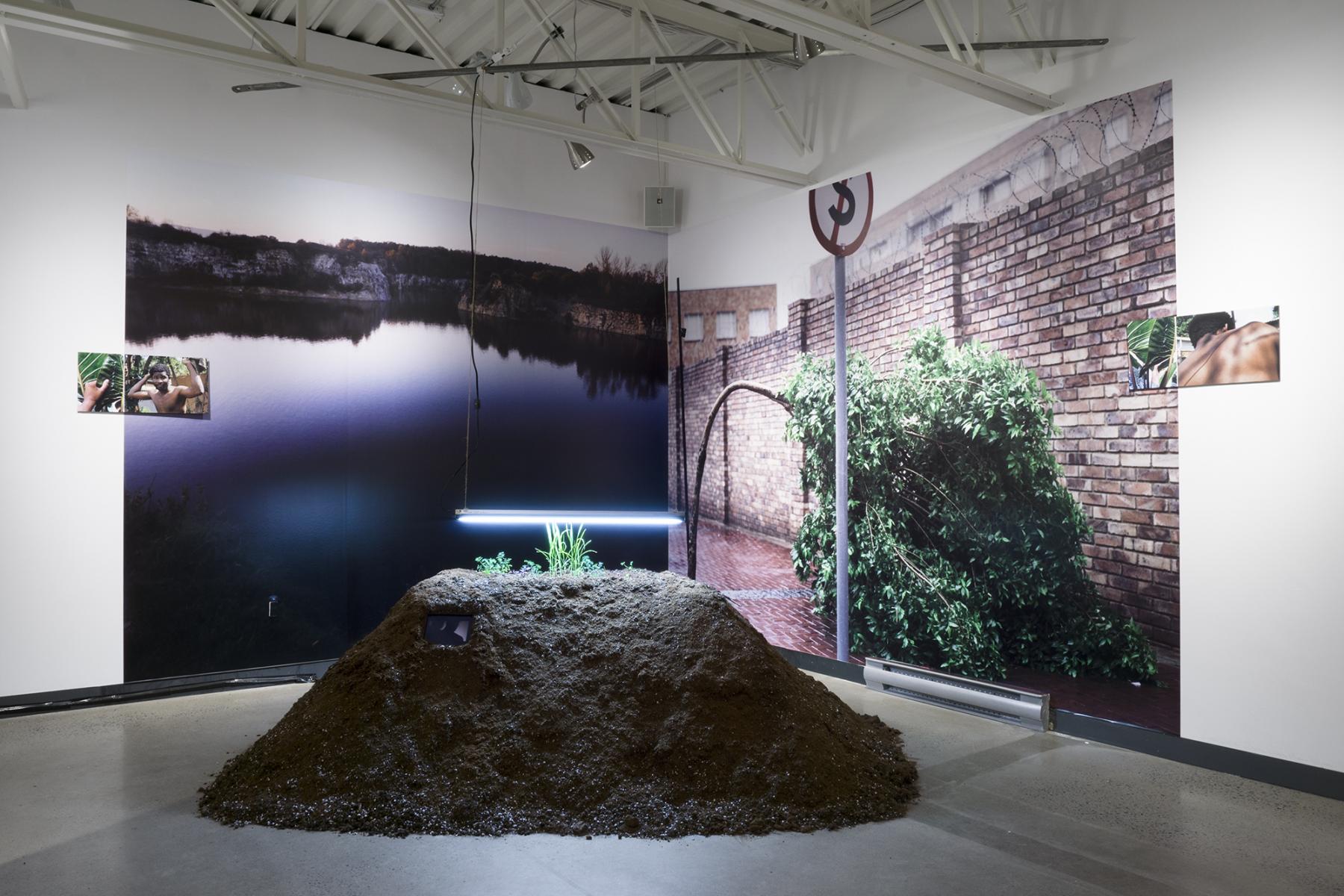
Lost Love, installation view at Never Apart, 2018
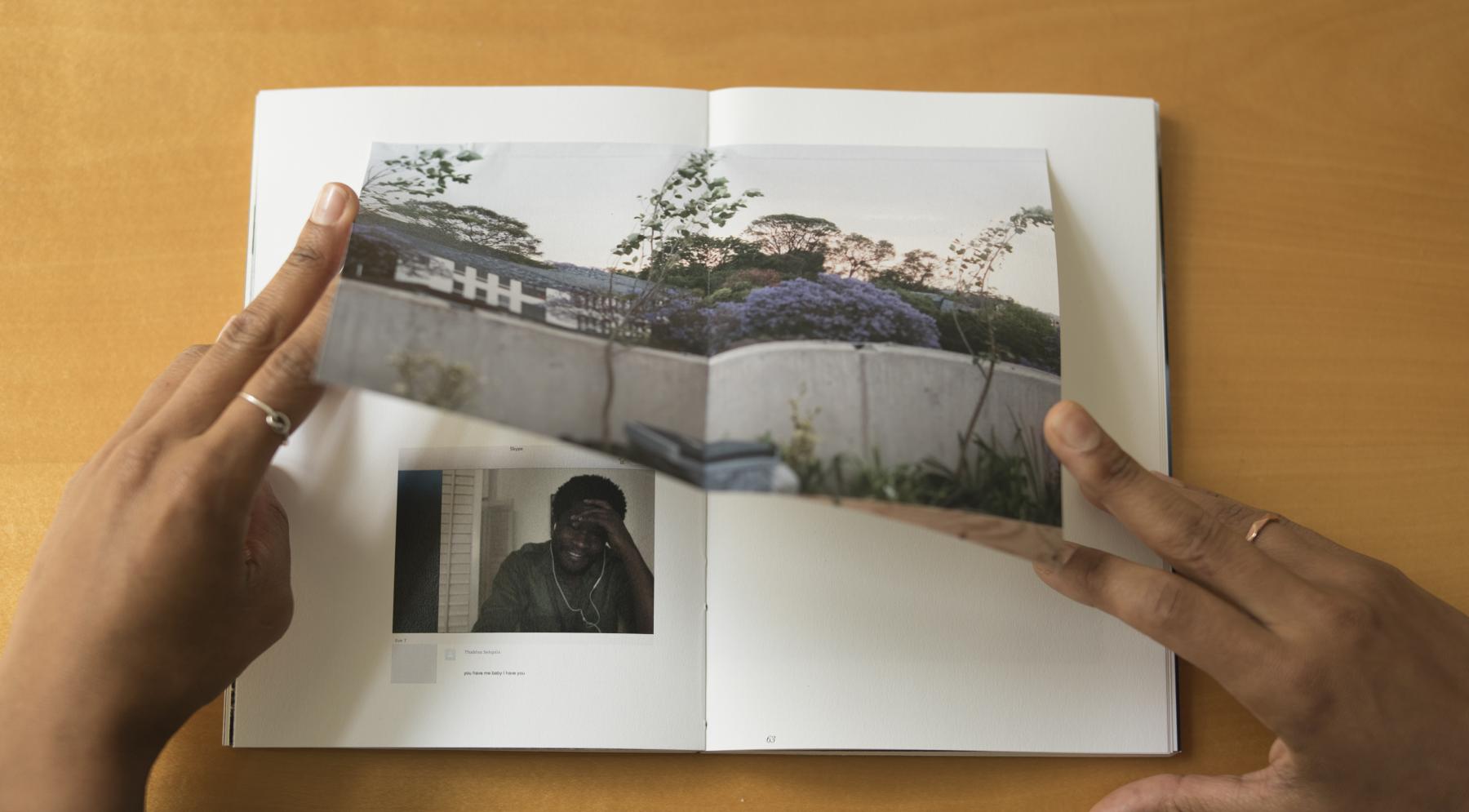
Lost Love, artist photobook, 2017
There’s a certain virtue in the last minute.
Yeah, exactly. Maybe that’s the thing about being last minute, is that it’s so hard to make decisions and so when it’s last minute you’re in it and then it flows more freely. At least for me it’s like that.
Lost Love has multiple different iterations: the 2018 exhibit, the book, and this year’s exhibit. Can you talk about the changes within those exhibitions, or the progression of your work? What changed and why did you choose to present it in these three different ways?
Well, at first it was a book. I was working on the book when I came back from South Africa. I was into this whole trend of specific, niche publications and I think a lot of beautiful things are being done with print. At first I thought I wanted to do a more creative book around all sorts of aspects of grief, but then I went into it as a more intimate work. It took me more than two years to do that, it was a long process.
When I finished the book I sent a proof to Alexis Hranchuk, whose magazine I had images in, and we met up and she invited me to do the show at Never Apart in Montreal (January 2018). That was more a presentation of the book—I had it on display so people could consult it, and the video playing. I made some seedlings in the winter and I had a grow light, the plants would grow throughout the show. It was my first exhibition in my language and aesthetic, where I was really going in that direction.
From there I had shows in Berlin and Toronto, where I was exploring grief but departing from the narrative of Lost Love. It is all very intimate work in a sense, but leaving the personal story out of it. Gallery 44 approached me to do a show with Lost Love, which we discussed when I was opening Sanctuaries at Xpace. That show opened October 26th, 2018, and my latest show ended October 26th, 2019, exactly a year later.
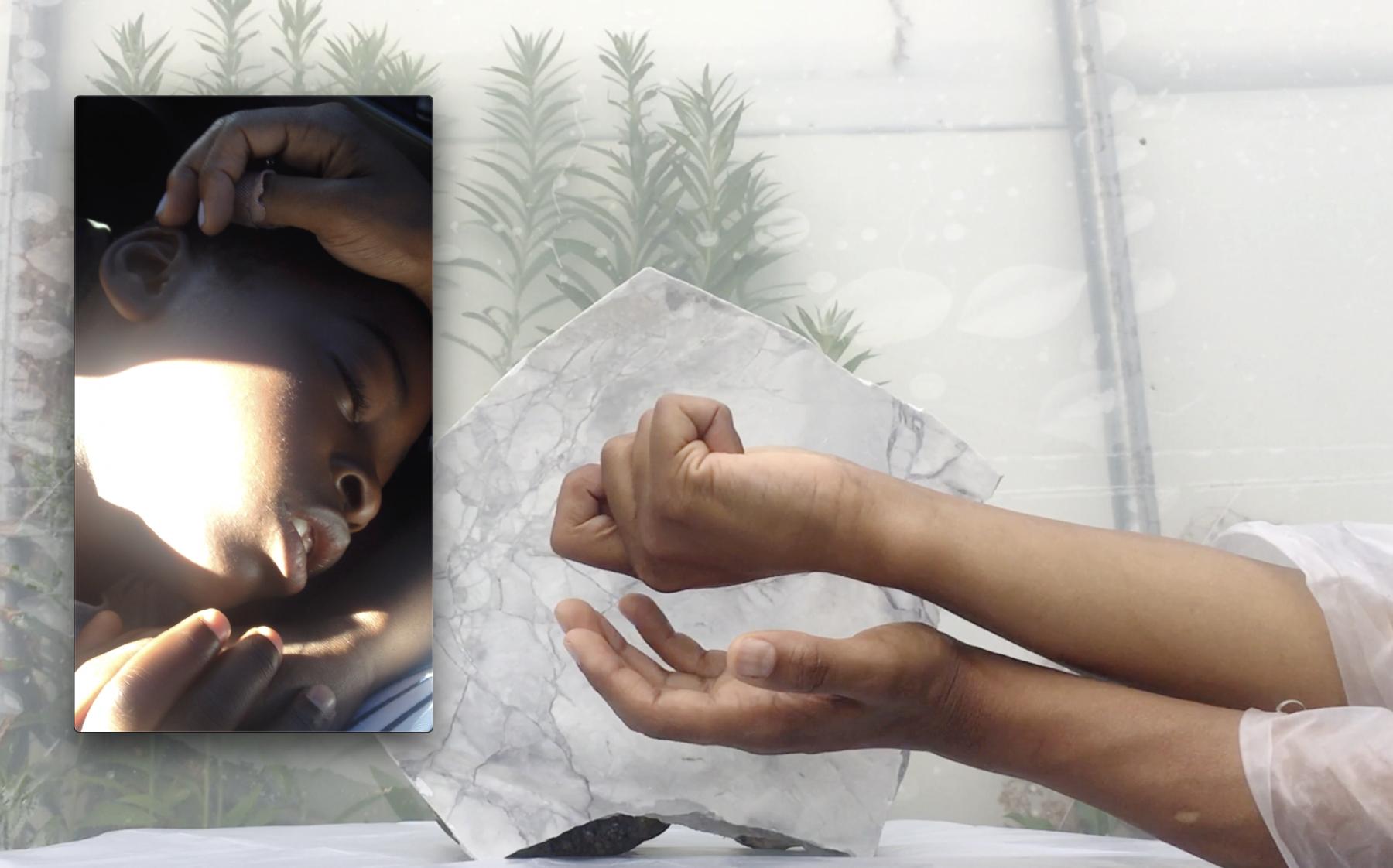
Dans le jardin (Lost Love - Saisons futures), 2019, Eve Tagny
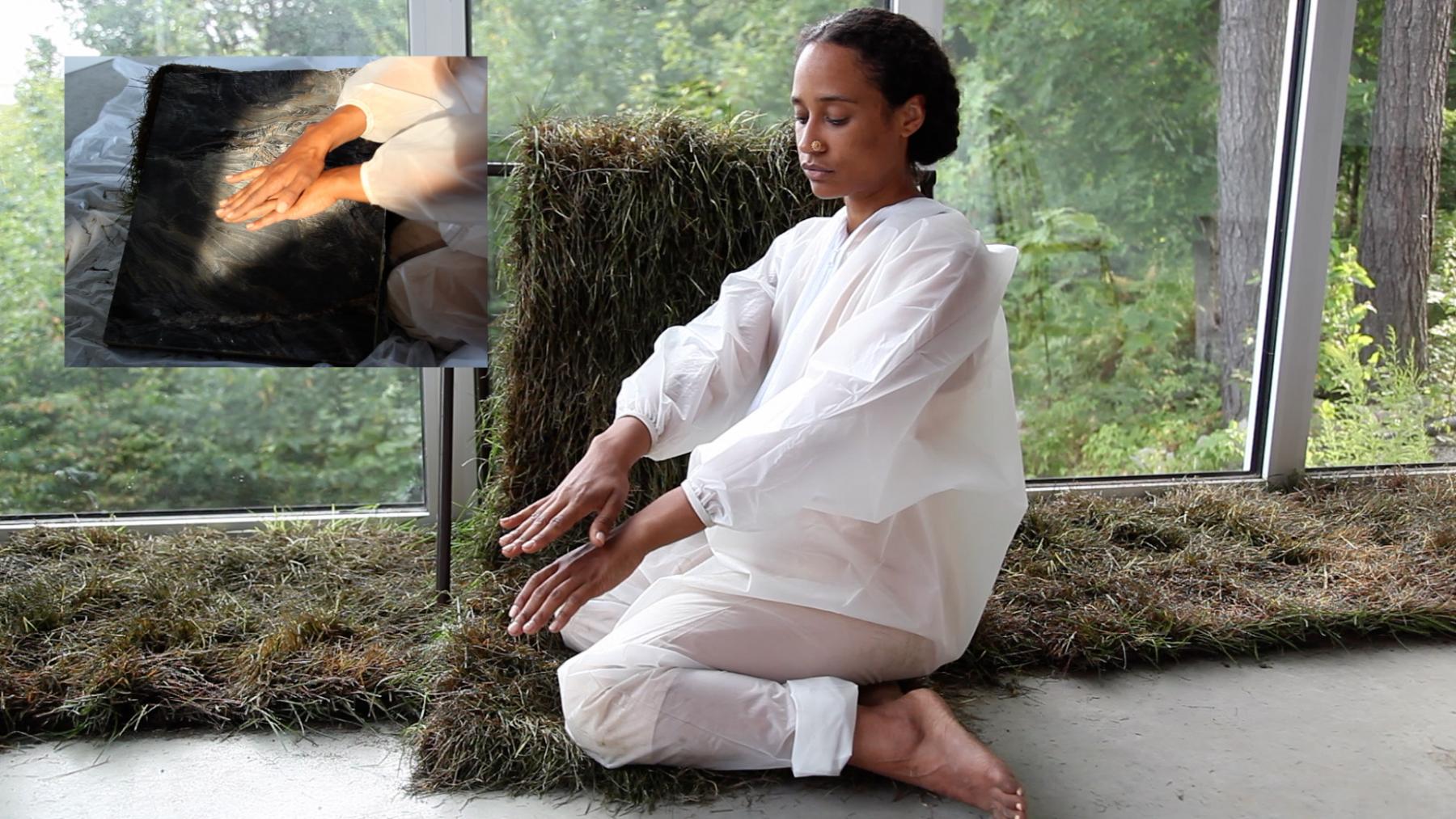
These are the hands that, video still, 2019
That’s crazy synchronicity!
Yeah, you kind of get caught up in life and you have these moments where you look back and you’re like, Oh my god, all this happened in just a year!
When we originally talked about Lost Love I was very close to the book, and after a year the challenge with this show was, how do I update it? How do you translate a book into an exhibited work? It is a very specific, open, flexible, and at the same time extremely rigid format; so how do you interpret that in space? And in personal terms, how do I update it to reflect where I’m at, artistically or creatively speaking? What makes sense now, what are my impulses now, what do I want to keep investigating with natural materials to render the idea of grief and renewal and that cycle? And also in terms of where I’m at personally with this grief; this story is so intimate. How do I present it in a public setting in a way that’s not too hermetical? There’s a certain element of distance you need…
For self-preservation?
Yeah self-preservation... it’s interesting, we connect to stories because they connect to our stories and you have to make them relatable. I’m more interested in how you start from the intimate to look at broader themes and broader populations.
What’s the first thing that comes to mind when you think of what you learned from the exhibition, from this showing of Lost Love?
It’s hard to tell at this point because I’m still feeling so floaty and just, not really anchored. At the same time, I think I am learning to accept the different phases [of the work], and to accept that my process—my rhythm—is a certain way, and that way is not necessarily what I imagine the desirable, kind of Type-A very organized way to be. Accepting that and feeling comfortable, and then learning how to work within the parameters that work for you and how to effectively collaborate with other people as well—those are the big lessons for the year.
In terms of the work itself, it was interesting to do a show in the summer. It’s such a unique period in Canada, like, okay, 'now is the time to live, quick quick quick!' And so it was hard. I wanted to do that but for this show I had to go really deep into winter emotions. It was nice though, working in the summer makes everything easier and lighter and it would have been a very different process had it not been a time of bloom and growth.
I think having that kind of lusciousness really informed what I was able to do: to improvise more and be outside and really see how trauma feels within my body. Meditating on how it feels every day and how it manifests itself. It’s been… I don’t think I have answers but before [the trauma] was so present and overpowering and now that life kind of goes on and you start working through it in all aspects of your life it’s like okay, what does it mean in the long term, how does trauma come to just be a part of you forever? I think that’s what I’m interested in now, looking at how it lives over a long period and going back toward something that’s embodied. I want to move toward more gestures and movements and open up a little bit. So I think it’s showing me a path toward what’s to come and what I could possibly be.